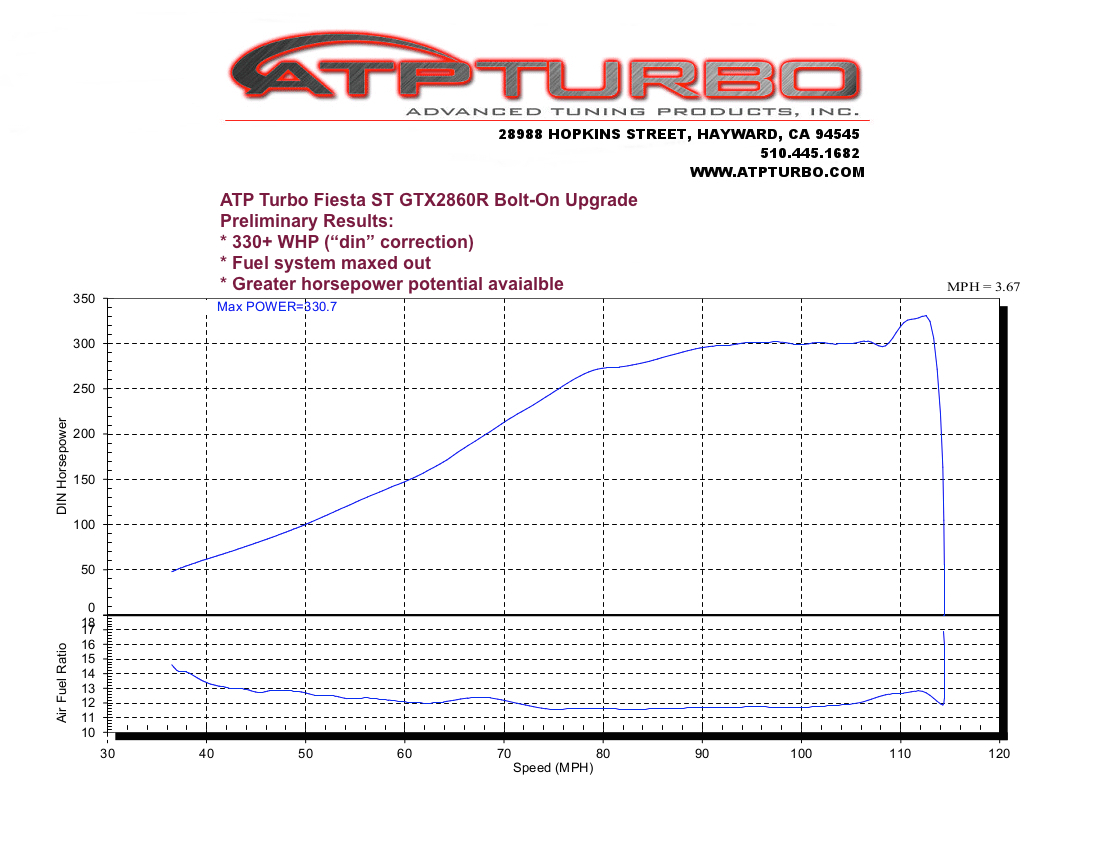I decided to try to quantify the gains I've felt between my car with the stock airbox and an older COBB OTS tune and the way it ran recently after I installed my custom intake (before heat shield).
I loaded my logs into Datazap and then compared 3rd gear between both.
I created a spreadsheet and recorded:
... for both runs.
I calculated the delta time and delta RPM for each.
Then I calculated a value of RPM Rise per Second. This is essentially the rate of RPM change every second.
I was careful to choose similar segments of the RPM band and made sure that the actual throttle position was 100% throughout.
Old log = 341.32 RPM gained/sec (took 4.005s to gain 1367 RPM)
New(er) log = 452.68 RPM gained/sec (took 3.075s to gain 1392 RPM)
By my calculations it's a 33% increase in performance.
Did I really gain this much performance? Is there something I'm missing or is this calculation otherwise flawed? (I didn't note fuel tank % on either logs... so one could be with an empty tank and the other, full) Both runs were within 2 degrees in terms of charge temps.
Wonder if I should go out at lunch and do another pull now that I have exhaust on...
Here's my Google Docs Spreadsheet in case anyone wants to double-check my data:
https://docs.google.com/spreadsheets/d/1VbgQIdbSLaFG7LYzzNqr0tzP2Z-LVC9Hscgp3aOtbs4/edit?usp=sharing
I loaded my logs into Datazap and then compared 3rd gear between both.
I created a spreadsheet and recorded:
- Start Time
- Start RPM
- End Time
- End RPM
... for both runs.
I calculated the delta time and delta RPM for each.
Then I calculated a value of RPM Rise per Second. This is essentially the rate of RPM change every second.
I was careful to choose similar segments of the RPM band and made sure that the actual throttle position was 100% throughout.
Old log = 341.32 RPM gained/sec (took 4.005s to gain 1367 RPM)
New(er) log = 452.68 RPM gained/sec (took 3.075s to gain 1392 RPM)
By my calculations it's a 33% increase in performance.
Did I really gain this much performance? Is there something I'm missing or is this calculation otherwise flawed? (I didn't note fuel tank % on either logs... so one could be with an empty tank and the other, full) Both runs were within 2 degrees in terms of charge temps.
Wonder if I should go out at lunch and do another pull now that I have exhaust on...
Here's my Google Docs Spreadsheet in case anyone wants to double-check my data:
https://docs.google.com/spreadsheets/d/1VbgQIdbSLaFG7LYzzNqr0tzP2Z-LVC9Hscgp3aOtbs4/edit?usp=sharing

